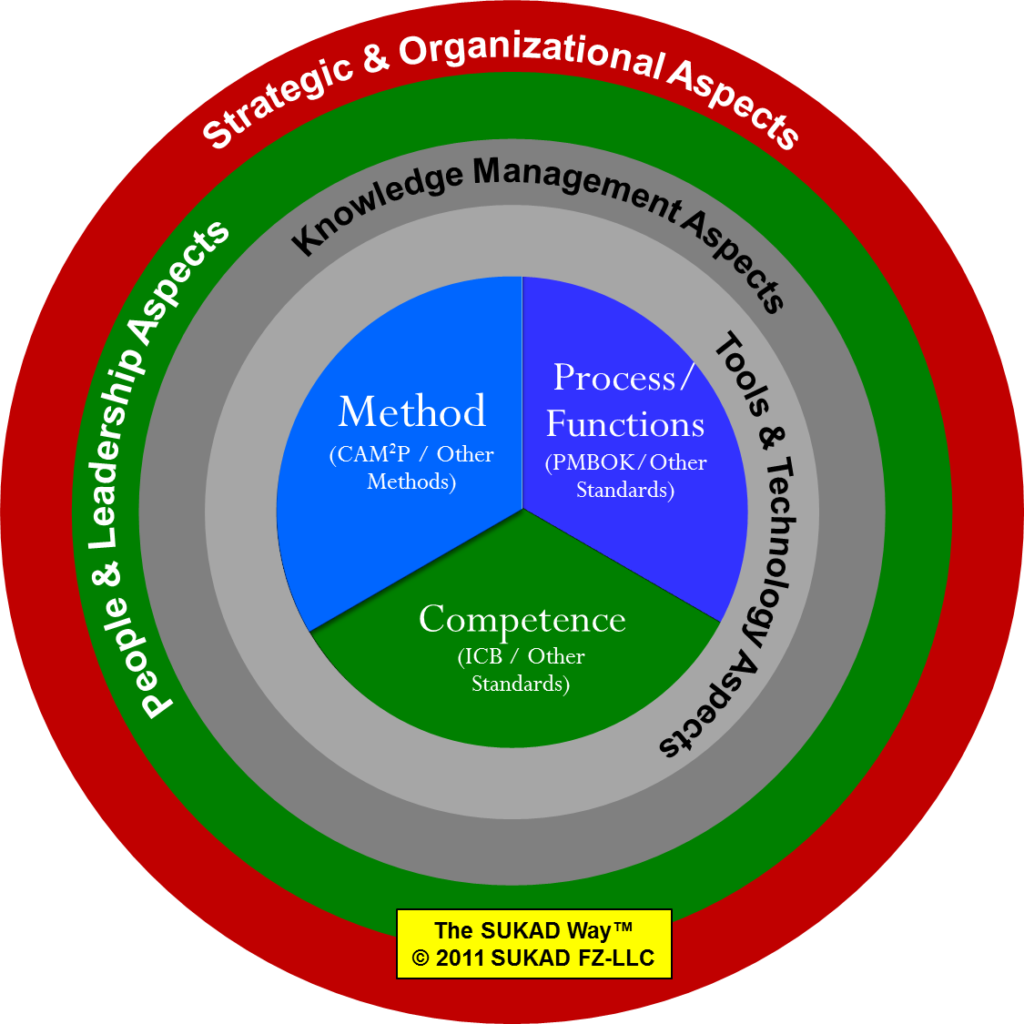Introduction
Over the last 2 to 3 weeks we have published 5 articles about project management, project management office, and failure in implementing project management. These five articles build on each others leading to this sixth article in the series.
In the last article, we closed with:
“Project management maturity is about implementing (Building) the project management system … … we mean the organizational system starting with the strategic aspects and including other elements; such as: methodology for managing projects and programs, processes, competence and performance management, leadership and professional development, etc. Then the question would be: how to build the project management system, leading to a higher level of project management maturity with the ultimate purpose of reaching toward a Project Management Center of Excellence?
How to build the Project Management System?
There are many ways and not sure if there is a single BEST way. Based on our experience, we would prefer a staged approach that is built on The SUKAD Way; our approach for managing ‘single’ projects and managing the organizational projects. This approach we brand as: The 7Es™: The SUKAD Seven Elements of Project Management Maturity™. At this time, we did not design our model (The 7Es™) to use for performing a maturity assessment that gives us a score from 1 to 5. Our model is for building a sustainable project management system, FIRST AND FOREMOST. Once a system is in place and in use, the organization can use our model for a high level qualitative assessment … or chose to go with more quantitative assessment in line with other models.
The SUKAD Seven Elements of Project Management Maturity™
We represent the model graphically in this following figure, and below the figure we will explain each element, briefly.
The First Element: Organizational and Strategic Aspects
This is the outer element (ring) and ideally, we should start here when we want to implement a sustainable project management system. In some cases, we might touch on this initially, implement the other elements, then come back and finish.
What does this element consists of?
- Must start building the project management system with clear vision of the desired outcome and expectations from implementing the system (measurable where possible),
- The organizational strategic objectives and formulated strategy
- Utilize program and portfolio management as the link that bridges the gaps toward strategy execution
- It is important to establish criteria to prioritize projects & programs
- Need proper policies and control (governance)
The Second Element: Project Management Methodology
- To adopt a simplified project management methodology
- Methodology should be project life span based that cover projects from idea to closure; and beyond
- Organization should customize/adapt the methodology to organizational environment
- Organization should decide on stages, key deliverables, and approval points
- Organization personnel must exercise discipline in the use of the methodology
- Some options for a methodology (function of application area/industry): PRINCE2, SDLC, Agile, SUKAD CAM2P™ Model; or build your own
The Third Element: Project Management Process and Functions
For this element we suggest implement the PMI Framework.
- Project Management Functions is what PMI calls Knowledge Areas (for those familiar with PMBOK Guide)
- Staying with PMI; PMBOK Guide offers us five process groups. These are: initiating, planning, executing, monitoring & controlling, and closing
- Processes and process groups repeat during a project life span; applicable in each phase
The Fourth Element: Project Management Competence
- Competence/competency are about proven abilities
- Require knowledge, skills, and attitude/behaviors
- It is difficult to assess and require evidence of performance
- Should be implement for project managers & team members
- IPMA Competence Baseline is a good source for this maturity element
The Fifth Element: Project Management Tools and Technology
- Touches on all core elements
- Include templates, checklists, process maps/flowcharts
- Include spreadsheet, mind maps …
- Include software tools
- Tools and technology is important for maximizing efficiency not effectiveness
- Common pitfalls: some organizations start here when they want to build PM System
The Sixth Element: Knowledge Management Aspects
The main components of the knowledge management aspects are:
- Organizational learning
- Lessons learned system
- Historical projects information
- Can be quite simple for most small and medium organizations; the key is to be organized and systematic
- For larger organization this could be quite sophisticated
The Seventh Element: Leadership and Professional Development
Depend on the organization implementing the project management system this element could be last or we could swap it with (or blend it with) Competence Element.
The major components are:
- Career management; including a framework, career path approach, and professional ladder
- Structured professional development; including: PM and System awareness program for all impacted personnel, more in depth learning for champions; certification is not a must but diversification is important
Conclusion and Summary
What we offer here is one approach and we briefly mentioned the components of the various elements. We also mentioned that we prefer an extended approach to implementing a sustainable project management system. We did not elaborate much on this last point (maybe a future case study).
In the last few articles we discussed various topics related to PMO and PM System and even failure. To achieve success, we need to avoid some of the mistakes that we had discussed, go with the extended approach, and separate PMO implementation from PM System implementation; they are different things!
Have you tried something similar or is your approach is different? Please share


This Blog post certainly provides excellent information regarding project management system. This really helps me a lot. I really love it!